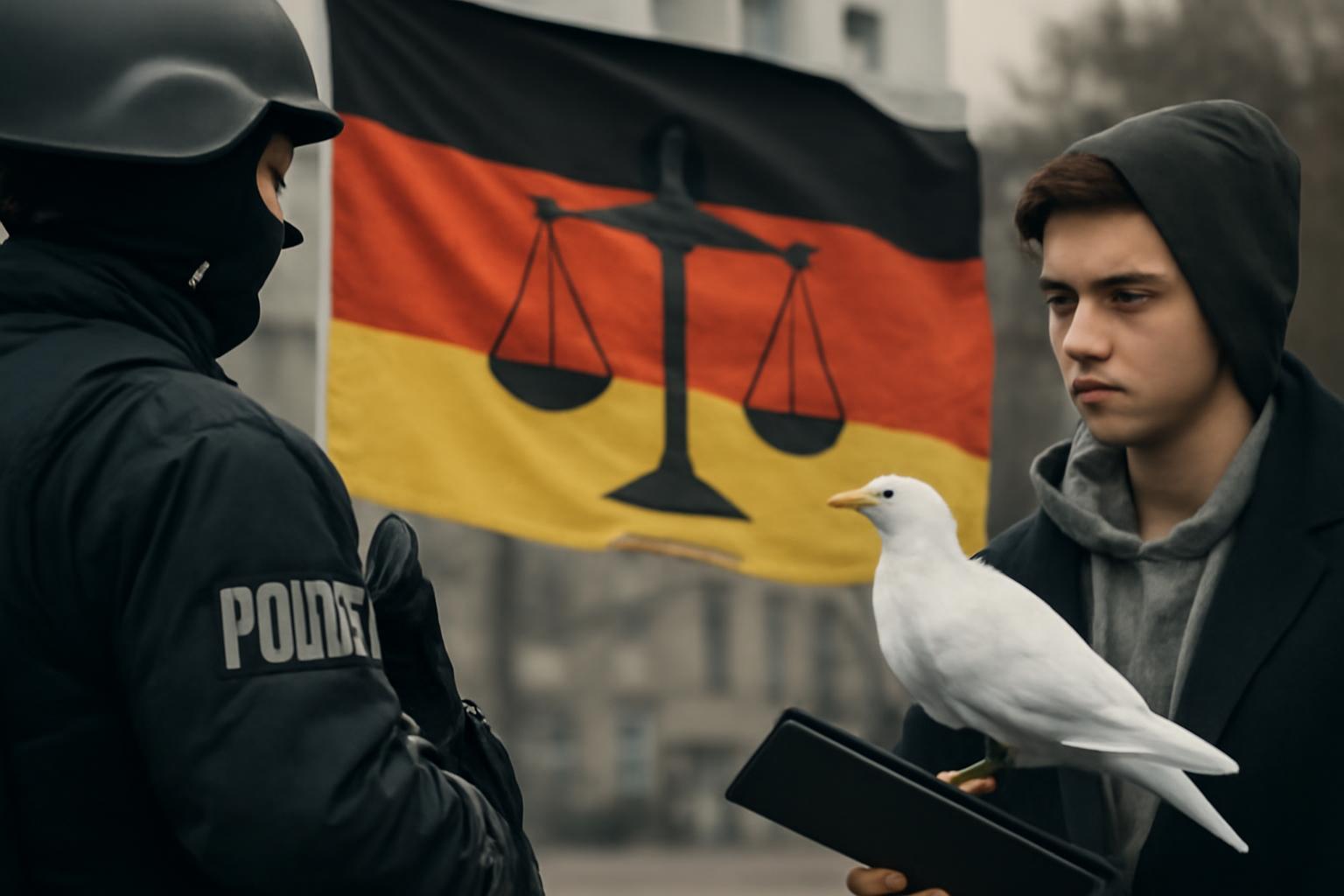A young man of eighteen, a suspected supporter of the Islamic State, stands accused in Germany of planning a terrorist act, possibly including an assault on the Israeli Embassy in Berlin. He reportedly searched the internet for instructions to make explosives but could not obtain the ingredients. He translated IS propaganda into Russian and Chechen, traveled to Berlin airport with the intention of joining IS cadres in Pakistan for military training, and was arrested on his way. Investigators say he financed his travel by taking two costly mobile-phone contracts and reselling the devices, and just before departure he sent a loyalty video to an IS member abroad. The indictment charges him with supporting a terrorist organization as a minor under twenty-one, attempted membership, preparing a grave violent crime, and obtaining instructions. The Berlin court will decide on the admissibility of the charges.
What strikes me with the force of a warning is how this small seedling of extremism sprouts within the conditions of a modern, global society that prizes liberty as much as precision in law. The very mechanisms that connect people—communication networks, travel, the rapid transfer of information, and the openness that makes innovation possible—are the same channels that can ferry hatred, secrecy, and the intent to destroy. To commend or condemn this young man without regard to the broader principles at play would be to mistake the shadow for the substance. The challenge is not merely to stop a plan in its tracks, but to understand how a free society can preserve its order while resisting the seductions of nihilistic violence.
In the heat of such cases, the instinct is to arm the state with ever more powers, ever more reach, and ever broader definitions of crime. Yet the essence of a free society is that the moral and legal order rests not on the whim of rulers but on durable rules that apply equally to all, even when risks are high. The danger lies not only in the act of violence but in the way we respond to it: if we permit preventive measures, guilt by association, or the criminalization of thoughts and intentions to erode the distinction between wrongdoing and mere susceptibility, we hollow out the very architecture that guarantees peaceful cooperation and innovation. A lawful society must demand evidence, proportion, and due process; it must distinguish between those who think dangerous thoughts and those who act on them, between sympathy with a cause and participation in its crimes.
The case also exposes the delicate problem of youth and radicalization. An 18-year-old, with access to digital networks and transnational propaganda, finds it easier than ever to be drawn into causes that promise meaning but deliver nothing but ruin. That reality calls for a policy that strengthens civil society, education, and opportunity—works of a liberal order that teach discernment, resilience, and the capacity to value pluralism. The temptation to respond with bans on ideas, or with coercive reeducation, would not only undermine liberty; it would risk feeding the very grievance machinery that extremism exploits. If a society fears its own open channels more than the danger posed by violence, it surrenders to fear and invites parochialism to take root.
And there is the financial and logistical texture of such plots. The fact that the plan could be funded through ordinary commercial activities—signing expensive mobile-phone contracts, reselling devices—illustrates how entrepreneurial energy, when untethered from legitimate aims, can be diverted toward wrongdoing. It is a reminder that markets, rightly understood, allocate resources for productive ends; but they do not by themselves discern moral boundaries. The proper remedy is not to wall off markets with prohibitionist rules that impede ordinary commerce, but to design targeted, evidence-based controls that disrupt illicit financing and logistics without crippling lawful exchange. In other words, we must pursue the narrow, well-defined lines where criminal activity interferes with protected liberties, not erase the borders of liberty itself.
The translation of propaganda into other languages is another facet of the problem. The freedom to speak, to translate, to circulate ideas is a cornerstone of a free mind and a free polity. Yet there is a boundary where words transform into concrete incitement and material support for violence. A robust legal framework should focus on concrete harms and verifiable steps toward wrongdoing, while resisting the temptation to police ideation outside the realm of unlawful acts. The state’s duty is to prosecute clear criminal behavior with precision, not to police thoughts or to suppress the free exchange of ideas that can ultimately expose and discredit harmful doctrines.
Ultimately, the resilience of a free society rests on trust in institutions that operate under the rule of law rather than fear. The court’s deliberation over admissibility embodies, in microcosm, the commitment to due process and measured judgment. If we are to preserve the advantages of liberty in the face of existential threats, we must cultivate institutions that are capable of distinguishing between danger and democratic legitimacy, between coercive power and principled restraint, between punitive necessity and the dignity of the individual. Only then can we expect a society to confront the menace of violent extremism without surrendering the very conditions that make it humane, prosperous, and free.
